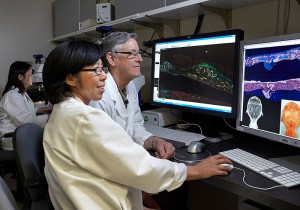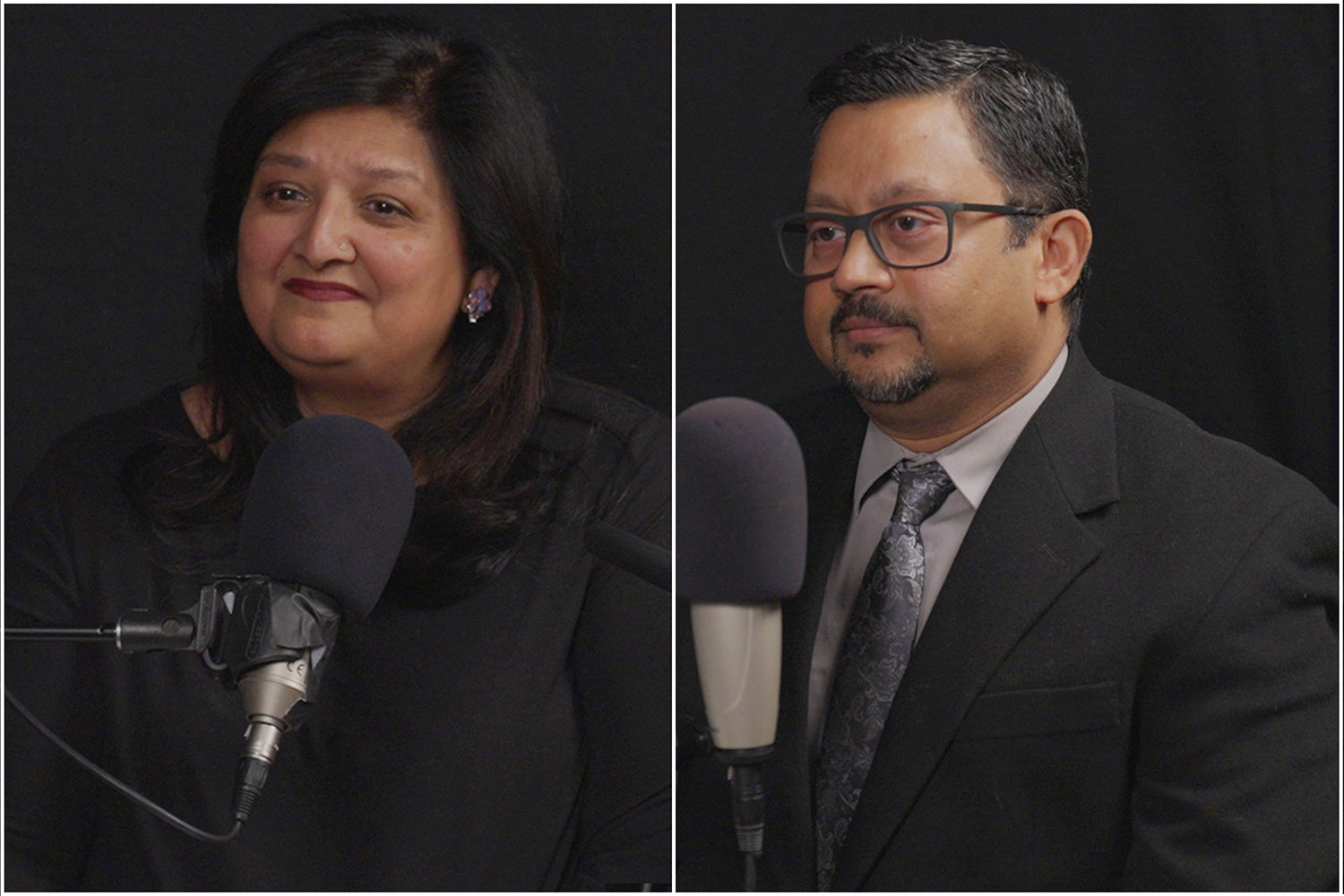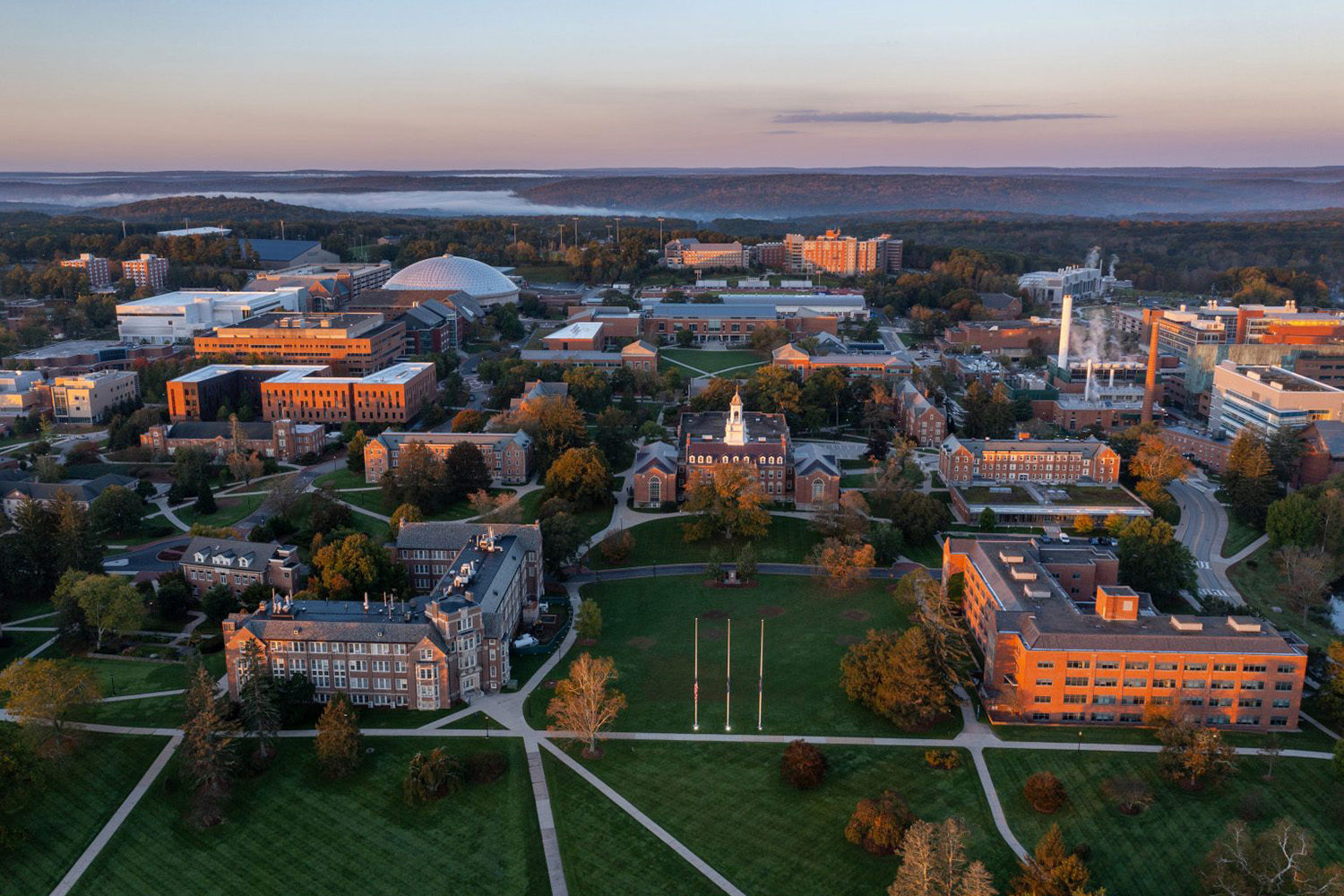
Dr. David Rowe has good reason to believe in stem cell therapy to repair human bones.
He’s just not convinced yet.
“The primary focus of this is to use various sources of human stem cells, both embryonic and adult, and see if we can make them make bone and correct a defect,” Rowe says, referring to a $2.7 million grant from the Department of Defense to study the use of stem cells to regenerate bone. “Using these cells to make bone is turning out to be far more of a problem than we had anticipated.”
The research has origins in a federal grant Rowe secured four years earlier, in which mouse-derived stem cells were shown to repair bone defects in mouse models. This latest grant introduces human cells to mouse models.
“The research field of regenerative medicine has said that human cells work,” says Rowe, the Health Center’s director for regenerative medicine and skeletal development. “When we try to use human-derived bone stem cell, we do not see the same quality of bone formed as is produced by the mouse-derived cells. The DoD review agency eventually bought into this problem that it may not be as good as we think it is, and that this needs more work.”
The grant encompasses four simultaneous projects spanning three years and two campuses:
- Dr. Cato T. Laurencin, director of the Institute for Regenerative Engineering, is the principal investigator on research focusing on creating scaffolds, or structures that temporarily support the bone until the new cells are in place.
- David Goldhamer, professor of molecular and cell biology in Storrs, is leading the muscle development component of the research, with a concentration on heterotopic ossification, a complication of traumatic injury in which bone tissue forms outside of the skeleton.
“The body starts making bone where it shouldn’t, and the muscle turns to bone,” Rowe says. “That’s an area he’s developed a real expertise in, and the Army is particularly interested in what he’s doing.”
- Alexander Lichtler, associate professor in the Center for Regenerative Medicine and Skeletal Development, is overseeing the process of growing the human stem cells from both adult and embryonic stem cell sources.
- The evaluation component is Rowe’s, working with Dong-Guk Shin and Seung-Hyun Hong in the Department of Computer Science in Storrs on a computationally based approach to data analysis.
“We like to call it ‘observer-independent assessment’ of an image,” Rowe says. “So much of what we do is, we take pictures of our histology. We really have invested very heavily in how to image things in a way that gives us color signals that have meaning the computer can interpret. All the experiments will be using this system, so we’ll have a common platform for judging one experimental variable versus the other.”
Rowe says his interest in genetic diseases in bone and brittle bone disease led him to this research.
“We think it’s well within the realm of possibility to take those individuals’ cells, make them induced pluripotent stem cells, correct the gene defect, then give them back to them again their own cells genetically corrected,” Rowe says. “That’s what we’re in it for primarily, is for the genetic reasons for it. But I think that until we can solve these trauma problems we’ll never solve the genetic ones, so that’s got to go first.”
Dr. David Rowe has good reason to believe in stem cell therapy to repair human bones.


